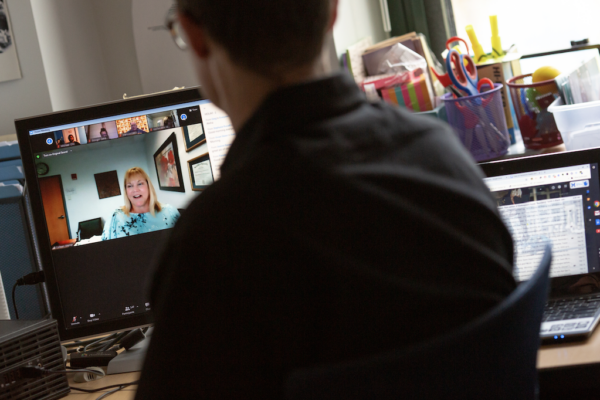We often talk about the “great reassessment” coming out of the pandemic in terms of our jobs. But it’s happening on many different levels—each with significant consequences for higher ed.
At the most basic level, the pandemic upended our lives, habits, and traditions, including college as the default after high school.
Such a shock to the system encourages us to reevaluate what we’re doing and try new things. In higher ed, we’re seeing growing evidence—both anecdotal and in surveys—that Americans are questioning the value of college.
Already, enrollment in higher education has declined by nearly 1.3 million students since the spring of 2020. It’s not that people think a post-secondary education isn’t necessary. Rather, the question they’re increasingly asking is whether a traditional, residential college is the right pathway after high school—or if taking time off or earning a two-year degree first or getting a technical education is a better route.
This skepticism has only deepened with an expanding set of data about college outcomes and a recognition that employers want graduates with skills, not just degrees. As a result, prospective students and their parents want to know what the return on their investment will be, and they’re flocking to colleges that provide hands-on, experiential learning as well as show how well their graduates do in the job market.
On another level, the pandemic also afforded us options on where we wanted to live, how we worked, the ways we shopped—and how we learn.
Tradition-bound colleges abandoned their academic calendars and offered flexible classes in-person, online, and in hybrid formats. It’s clear that the word we heard so often on the Future U. Campus Tour last spring—optionality—is the new normal in every sector of the economy. Higher education can’t return to its old way of doing business and expect to survive. A focus on the student experience—making it flexible, seamless, and relevant—is critical in the coming years.
Finally, the experience of Covid-19 exposed challenges for higher ed’s financial stability and workforce that had been accumulating for years.
The decade ahead will require both financial and human capital that many colleges simply don’t have at their disposal. The path forward for many institutions is not one that they will take alone, but is instead one where they align with other colleges and universities as well as develop partnerships with private entities to accelerate innovation.
[Read More: The Rise of For-Profit Partnerrships in Higher Education]
The risk facing colleges and universities in this decade ahead is one many leaders I talk with acknowledge is also an enormous opportunity. That is, if institutions are willing to rethink the legacy ecosystem that defines higher education—namely rankings and prestige and the perceived legitimacy that comes with both. Moving to “the next level” was the standard and strategic direction of much of higher education before the pandemic.
Operating during a global pandemic gave colleges permission to act differently. Indeed, few institutions approached the past two years in exactly the same way. Colleges have more agile mindsets coming out of the pandemic.
The question now is whether various stakeholders from trustees and presidents to faculty members and alumni will pull the levers available to them to gain a competitive advantage and make the needed changes that will endure.

